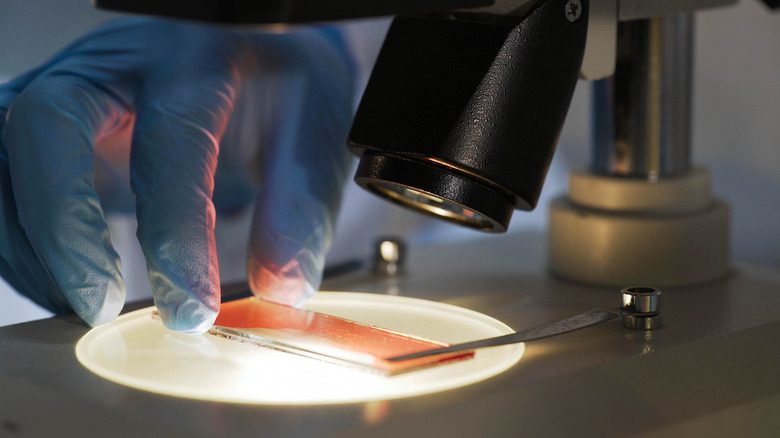Facts About Lipids
Lipids are large, diverse molecules linked by the property of being insoluble in water. Along with proteins, carbohydrates and nucleic acids, lipids are one of the four main types of organic macromolecules necessary for life's functioning. Lipids are involved in how the body stores energy, regulates biological processes, and maintains structural integrity at the cellular level. A more detailed understanding of lipids may provide critical insight into the role of lipids in affecting major human health issues.
Features
Features
Lipids are a chemically diverse group of compounds, but the defining feature linking all lipids is that they are hydrophobic, meaning that they don't mix with or dissolve well in water. Carbon atoms are important in the structure of a lipid and other organic molecules in that carbon forms a maximum of four bonds with other atoms, which allows for the formation of a large diversity of molecules.
Types
Types
Lipids include fats, phospholipids and steroids. Fats function in energy storage. Phospholipids are important for forming cell membranes, which act as "gate-keepers" for cells. Steroids serve multiple functions within the body, from chemical signaling to structural functioning. Cholesterol is a steroid which is important in helping cell membranes keep their structure. Hormones like testosterone and estrogen are steroids responsible for sex traits.
Production
Production
In the body, lipids are produced by a cellular organelle called the endoplasmic reticulum, or ER. There are two types of ER: smooth ER, which produces oils, phospholipids and steroids, and rough ER, which produces phospholipids for making cell membranes.
Structure
Structure
As with all organic molecules, the backbone of the lipid molecule is a chain of carbon atoms. From there, the three main types of lipid molecule vary in structure.
In a fat, a glycerol (a three-carbon alcohol) is attached to a long "tail" consisting of three fatty acids (this is why fats are also called "triglycerides").
Phospholipids are structurally similar to fats, but with only two fatty acids attached to the glycerol. In place of the third fatty acid is a phosphate group.
Steroids are formed from four fused carbon rings, with differing chemical groups attached that affect the function of the molecule.
Lipids and Health
Lipids and Health
While most biomedical research has focused on proteins and their relation to gene function, lipids are increasingly recognized as a major player in human health issues. According to the National Institutes of Health, lipid imbalances affect disease in millions of people around the globe. High cholesterol impacts cardiovascular disease, which is the number one killer of Americans. Lipids also play a role in a number of illnesses including Alzheimer's disease, cancer, asthma, rheumatoid arthritis and other inflammatory diseases. Identifying and mapping production of lipids and studying how lipids interact with each other within cells may help scientists diagnose and treat these conditions.
References
- Biology: Concepts and Connections; Neil A. Campbell; 2009
Cite This Article
MLA
Veloz, Liz. "Facts About Lipids" sciencing.com, https://www.sciencing.com/lipids-2720/. 31 May 2013.
APA
Veloz, Liz. (2013, May 31). Facts About Lipids. sciencing.com. Retrieved from https://www.sciencing.com/lipids-2720/
Chicago
Veloz, Liz. Facts About Lipids last modified August 30, 2022. https://www.sciencing.com/lipids-2720/
